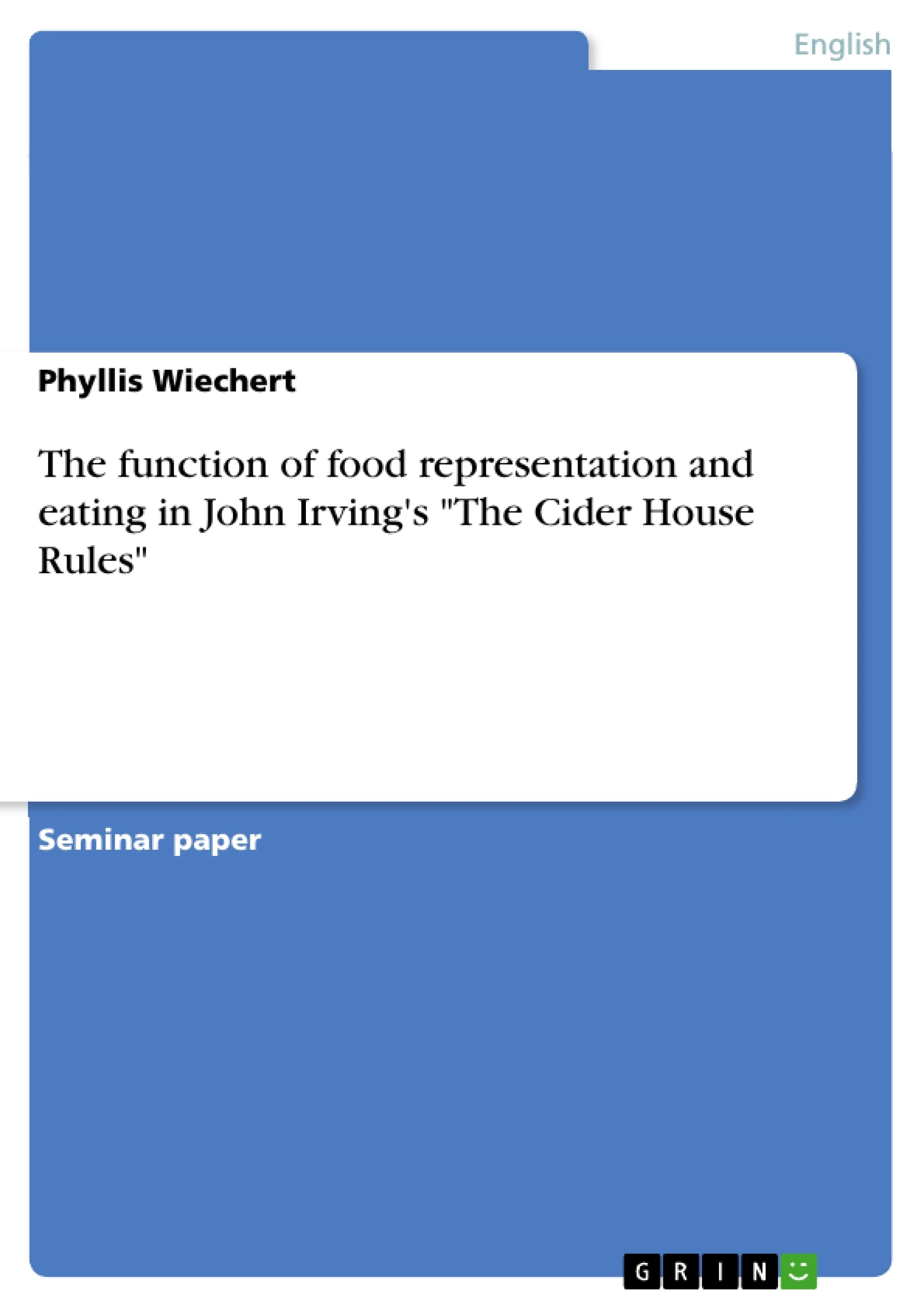Excerpt
Table of Contence
1. Introduction
2. Social structure
2.1. Maine
2.2. Theories on food
2.2.1 Claude Levi-Strauss
2.2.2 Levi-Strauss and Irving’s Cider House Rules
2.2.2.1 Apple cider
2.2.2.2 Apple blossom honey
2.2.2.3 Apple jelly
2.2.2.4 Apple Pies
2.2.2.5 Results
2.2.3. Roland Barthes
2.2.4 Roland Barthes and Irving’s Cider House Rules
2.2.4.1 The Worthington’s
2.2.4.2 The apple farmers
2.2.5.3 The migrants
2.2.5.4. Results
3 Homer Wells
3.1 The influence other characters have on Homer
3.1.1 Homer Wells - Dr. Larch
3.1.2 Homer Wells – Melony
3.1.3 Homer Wells – Candy and Wally
3.1.4 Homer Wells – pickers
3.2 Symbolic meaning of apples
3.2.1. Apples and the novel
3.3. Formative moments on the apple orchard for Homer Wells
3.4 Connection of apple farming and Homer’s personal development
4. The connection of the title and the novel
5. Conclusion
6. Bibliography
6.1 Internet sources
1. Introduction
The purpose of this paper is to analyze the question of the function of food representation and eating in the novel “The Cider House Rules” by John Irving, first published in 1985 by William Morrow.
The relevance of this question can already be found in the title of the novel. Since the title “The Cider House Rules” combines food, or better drink with rules and housing, there must be some deeper connection between them. What exactly is meant by these rules? These rules must be social agreements, which again are connected to food and drink.
The novel also relates to a local and regional culture, the culture of apple growing, to Maine, and to certain social structures.
It would be of interest to analyze the influence food has on the novel’s main characters. All these questions lead to the main question and are going to focus on the function that food and drink have in the novel.
In the first part, this paper gives background information on the novel’s settings in Maine and gives theoretical reference to the cultural anthropologist Claude Levi-Strauss and the social and literary critic Roland Barthes.
The second part will then focusing on Homer Wells, one of the main characters in the novel. It concentrates on the influences the other characters have on Homer Wells, especially Dr. Larch, Melony, Candy, Wally, and the migrants. Then the symbolic meaning of apples will be discussed. Homer Wells’ most forming moments on the orchard will be explained and also how his life is connected with apple farming.
In the third part the relation of the title and the novel will be analyzed. This includes also the reasons for the cider house. The results will be summarized in the end.
2. Social structure
Social structure includes the background of a person, how this person was raised and in what kind of surrounding this person grew up and the influences it had in his life. The apple growing as it is shown in the novel has a socially structuring function. It is also connected to a special setting, and it divides people into groups according to their class, age, gender, and race.
2.1. Maine
The special setting of the novel is Maine. The three towns St. Cloud’s, Heart’s Rock, and Heart’s Haven play an important role. John Irving creates a landscape with dark and light images, which are dominant for these towns.
St. Cloud’s is only described as a dark, old town which was founded by the Ramses Paper Company, and when the company closed, they left the small village behind.
“St. Clouds dark, brooding, and melancholic atmosphere isolated the orphanage in which Dr. Larch delivers or aborts babies.“ (Edward C. Reilly 1991: 103)
In contrast to this stands the description of Heart’s Haven and Heart’s Rock with their light images.
“East of Cape Kenneth, the tourist trap, lies Heart’s Haven; inland from the small, pretty harbor town that’s called a haven squats the town of Heart’s Rock.” (John Irving 1986: 155)
“Heart’s Rock and Heart’s Haven are bathed in sunshine, refreshed by ocean breezes, and thickly populated.” (Edward C. Reilly 1991: 103)
2.2. Theories on food
The novel deals with many aspects of food. How food is used and what kind of influence food can have on people and their lives. Levi-Strauss and Barthes have both concentrated on food theories especially how food influences people and how food serves as a sign.
[...]
- Quote paper
- Phyllis Wiechert (Author), 2000, The function of food representation and eating in John Irving's "The Cider House Rules", Munich, GRIN Verlag, https://www.grin.com/document/73179
Publish now - it's free






















Comments